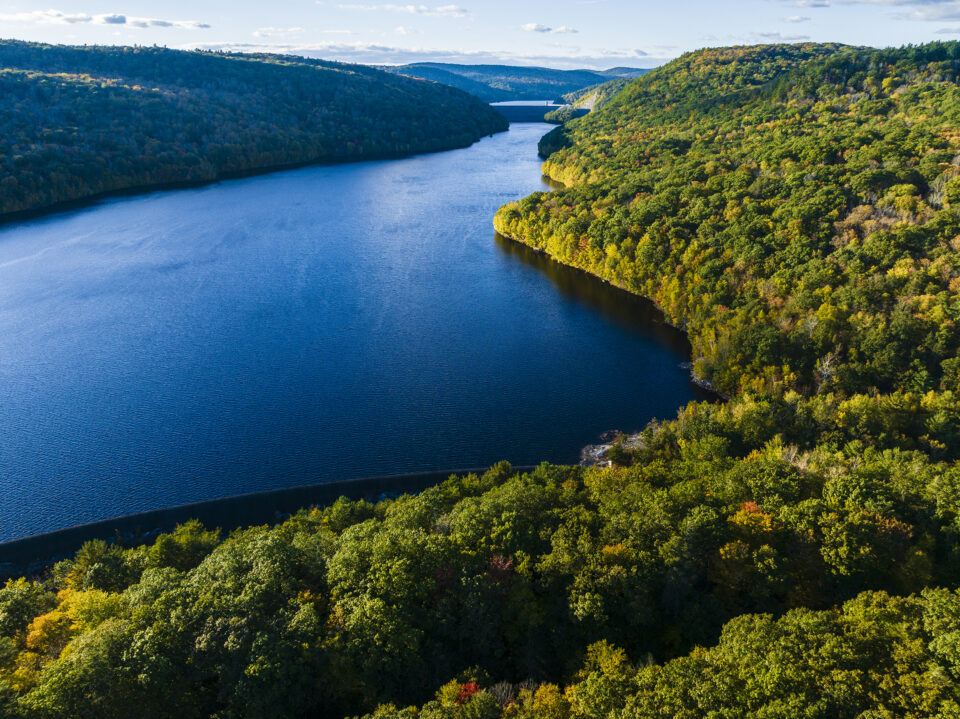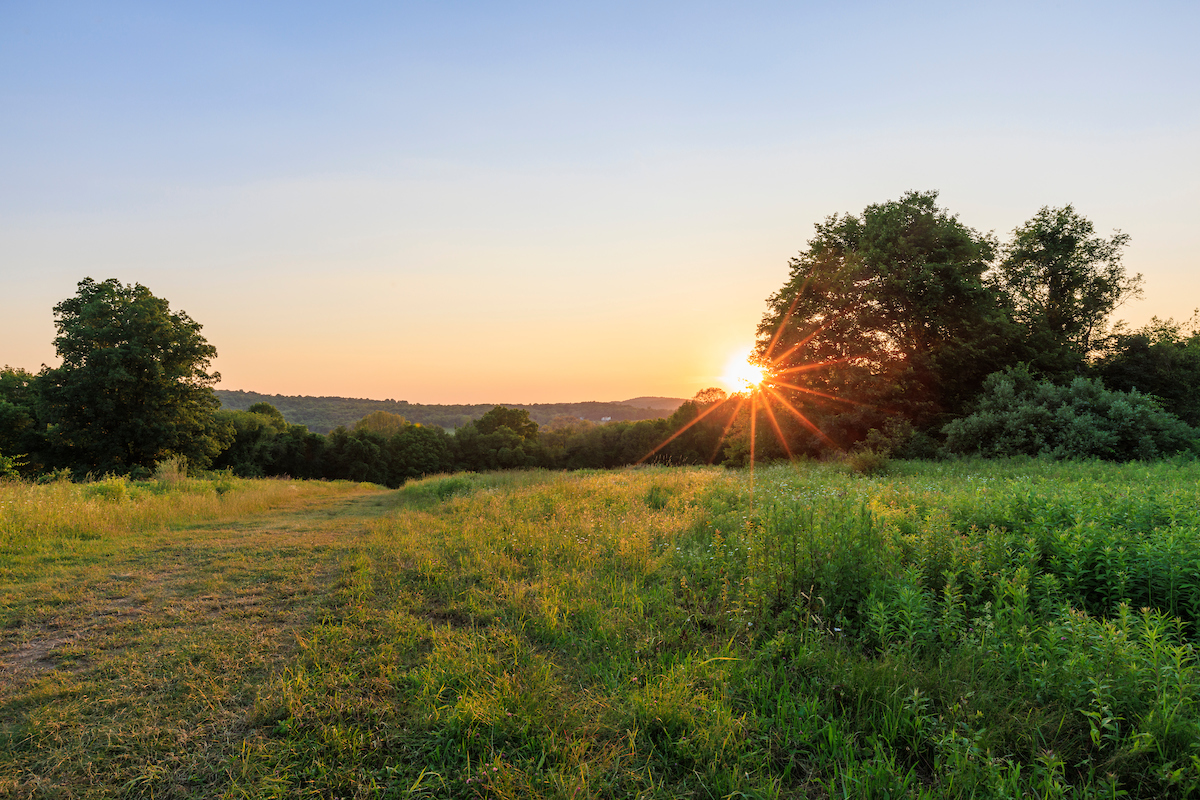October 10, 2025 (Kent, CT) – Northwest Connecticut Land Conservancy (NCLC) is proud to announce it has received funding approval for up to $725,000 from the Connecticut State Bond Commission to support the Colebrook Reservoir Easement acquisition—a land protection project that will collectively protect 5,200 acres that safeguard CT’s largest untapped drinking water reservoir and vital wildlife habitat (in Colebrook and Hartland, Connecticut, and Sandisfield and Tolland, Massachusetts).
Since 2023, NCLC has been collaborating with The Metropolitan District (MDC) landowners and partners, Save the Sound, Rivers Alliance of Connecticut, Farmington River Watershed Association, Connecticut Land Conservation Council, and The Nature Conservancy in Connecticut, to secure this significant stretch of land. With this final funding in place, NCLC can proceed with the $1 million purchase of this conservation easement, which is expected to close by the end of the year.
“This is one of the largest land protection projects in our state’s history and safeguards our state’s clean water, environmental health, and continued public access to nature,” said NCLC Executive Director Catherine Rawson. “Thanks to the shared vision and support of MDC, partner organizations, and state leaders, these vital natural lands and waters will be permanently protected for everyone, including the generations yet to come.”
MDC CEO Scott Jellison noted, “This important next step in the process sets the stage to move forward with the agreement for the long-term protection of this invaluable, regional asset. The MDC’s history of responsible environmental stewardship of over 31,000 acres of watershed land demonstrates that we are well prepared to continue those efforts into the future with this historic partnership.”
“In Connecticut we’re proud of our natural landscapes and resources,” said Governor Ned Lamont. “The Colebrook Reservoir Conservation Project is another step forward in helping to protect our state’s natural beauty for generations to come.”
“This funding represents a tremendous step forward for Connecticut. By permanently protecting more than 3,800 acres around the Colebrook Reservoir, we are safeguarding clean drinking water, preserving an ecologically rich and climate-resilient landscape, and ensuring public access to open space at a time when protecting our environment has never been more important,” remarked Representative Maria Horn. “This is an investment in our communities, our health, and our future. I am very proud to have secured these funds alongside the Speaker and Governor.”
“We only get one shot to preserve our natural resources, and this project seizes that opportunity,” Senator Paul Honig said. “I’m happy to support the NCLC’s work to protect the natural beauty of northwestern Connecticut, and I’m thrilled the State Bond Commission provided the funding to make it happen. This effort ensures that future generations will have access to these irreplaceable outdoor spaces and the clean drinking water they provide.“
“The conservation efforts of the Colebrook Reservoir lands represent a significant and forward-looking investment in Connecticut’s environmental and public health,” stated Representative Jay Case. I applaud the State Bond Commission for recognizing the importance of this project and providing the funding necessary to make it a reality. This initiative will safeguard clean drinking water and preserve critical habitats. I commend the Northwest Connecticut Land Conservancy (NCLC) for its leadership in advancing this transformative effort for the benefit of generations to come.”
Read more about this Colebrook Reservoir conservation project here.
About Northwest Connecticut Land Conservancy (NCLC)
Northwest Connecticut Land Conservancy is a nonprofit, regional conservation organization working with the communities of Litchfield and northern Fairfield Counties to safeguard natural and working lands, public recreation areas, and drinking water resources forever. Founded in 1965, NCLC is the largest land trust in Connecticut, protecting 14,200 acres (and growing). To strengthen the region’s capacity to conserve high-quality conservation lands and ensure the permanence of those conserved lands for the future, NCLC merged with Brookfield Open Space Legacy in 2019, Naromi Land Trust in 2020, and Candlewood Valley Regional Land Trust in 2025. NCLC’s conserved lands include 31 public hiking preserves, 49 working farms, 57 miles of rivers and streams, and over 3,000 acres of habitat for rare and endangered species.
For more information about NCLC and how you can support conservation efforts in our region, please visit ctland.org.













